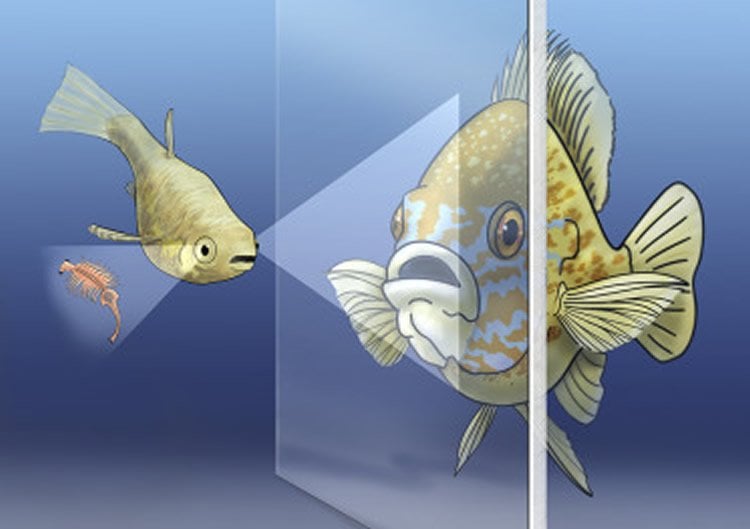Summary: A new study looks at why people and animals tend to naturally favor one side of our bodies over the other.
Source: Cell Press.
Most left-handers can rattle off a list of their eminent comrades-in-arms: Oprah Winfrey, Albert Einstein, and Barack Obama, just to name three, but they may want to add on cockatoos, “southpaw” squirrels, and some house cats. “Handed-ness” or left-right asymmetry is prevalent throughout the animal kingdom, including in pigeons and zebrafish. But why do people and animals naturally favor one side over the other, and what does it teach us about the brain’s inner workings? Researchers explore these questions in a Review published April 19 in Neuron.
“Studying asymmetry can provide the most basic blueprints for how the brain is organized,” says lead author Onur Güntürkün, of the Institute of Cognitive Neuroscience at Ruhr-University Bochum, in Germany. “It gives us an unprecedented window into the wiring of the early, developing brain that ultimately determines the fate of the adult brain.” Because asymmetry is not limited to human brains, a number of animal models have emerged that can help unravel both the genetic and epigenetic foundations for the phenomenon of lateralization.
Güntürkün says that brain lateralization serves three purposes. The first of those is perceptual specialization: the more complex a task, the more it helps to have a specialized area for performing that task. For example, in most people, the right side of the brain focuses on recognizing faces, while the left side is responsible for identifying letters and words.
The next area is motor specialization, which brings us to the southpaw. “What you do with your hands is a miracle of biological evolution,” he says. “We are the master of our hands, and by funneling this training to one hemisphere of our brains, we can become more proficient at that kind of dexterity.” Natural selection likely provided an advantage that resulted in a proportion of the population–about 10%–favoring the opposite hand. The thing that connects the two is parallel processing, which enables us to do two things that use different parts of the brain at the same time.
Brain asymmetry is present in many vertebrates and invertebrates. “It is, in fact, an invention of nature, which evolved because many animals have the same needs for specialization that we do,” says Güntürkün, who is also currently a visiting fellow at the Stellenbosch Institute for Advanced Study in South Africa. Studies have shown that birds, like chickens, use one eye to distinguish grain from pebbles on the ground while at the same time using the other eye to keep watch for predators overhead.
Research on pigeons has shown that this specialization often is a function of environmental influences. When a pigeon chick develops in the shell, its right eye turns toward the outside, leaving its left eye to face its body. When the right eye is exposed to light coming through the shell, it triggers a series of neuronal changes that allow the two eyes to ultimately have different jobs.

A zebrafish model of lateralization, meanwhile, has enabled researchers to delve into the genetic aspects of asymmetrical development. Studies of important developmental pathways, including the Nodal signaling pathway, are uncovering details about how, very early in an embryo’s development, the cilia act to shuffle gene products to one side of the brain or the other. By manipulating the genes in Nodal and other pathways, researchers can study the effects of these developmental changes on zebrafish behaviors.
Güntürkün says that this research can provide insight into the effects of asymmetry on brain conditions in humans. “There are almost no disorders of the human brain that are not linked to brain asymmetries,” he says. “If we understand the ontogeny of lateralization, we can make a great leap to see how brain wiring early in the developmental process may go wrong in these pathological cases.”
Funding: Funding for this review was provided by DFG (the German Research Foundation).
Source: Joseph Caputo – Cell Press
Image Source: NeuroscienceNews.com image is credited to Oliver Wrobel/Neuron.
Original Research: Full open access research for “Ontogenesis of Lateralization” by Onur Güntürkün and Sebastian Ocklenburg in Neuron. Published online April 19 2017 doi:10.1016/j.neuron.2017.02.045
[cbtabs][cbtab title=”MLA”]Cell Press “Why Animals Evolved to Favor One Side of the Brain.” NeuroscienceNews. NeuroscienceNews, 19 April 2017.
<https://neurosciencenews.com/brain-side-animals-evolution-6443/>.[/cbtab][cbtab title=”APA”]Cell Press (2017, April 19). Why Animals Evolved to Favor One Side of the Brain. NeuroscienceNew. Retrieved April 19, 2017 from https://neurosciencenews.com/brain-side-animals-evolution-6443/[/cbtab][cbtab title=”Chicago”]Cell Press “Why Animals Evolved to Favor One Side of the Brain.” https://neurosciencenews.com/brain-side-animals-evolution-6443/ (accessed April 19, 2017).[/cbtab][/cbtabs]
Abstract
Ontogenesis of Lateralization
The brains of humans and other animals are asymmetrically organized, but we still know little about the ontogenetic and neural fundaments of lateralizations. Here, we review the current state of understanding about the role of genetic and non-genetic factors for the development of neural and behavioral asymmetries in vertebrates. At the genetic level, the Nodal signaling cascade is of central importance, but several other genetic pathways have been discovered to also shape the lateralized embryonic brain. Studies in humans identified several relevant genes with mostly small effect sizes but also highlight the extreme importance of non-genetic factors for asymmetry development. This is also visible in visual asymmetry in birds, in which genes only affect embryonic body position, while the resulting left-right difference of visual stimulation shapes visual pathways in a lateralized way. These and further studies in zebrafish and humans highlight that the many routes from genes to asymmetries of function run through left-right differences of neural pathways. They constitute the lateralized blueprints of our perception, cognition, and action.
“Ontogenesis of Lateralization” by Onur Güntürkün and Sebastian Ocklenburg in Neuron. Published online April 19 2017 doi:10.1016/j.neuron.2017.02.045






